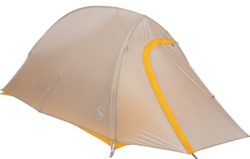The Basic Bro’s Big Three
Being Basic
According to the Urban Dictionary, a Basic Bro is an “exceedingly ordinary male”, which is the counterpart to a “Basic Bitch“. Going “basic” includes things like wearing boat shoes, drinking fireball whisky, and playing Fantasy Football (admittedly, I am guilty of at least two of those). Essentially, it comes down to doing what your friends are doing and what certain societal trends have deemed important.
In the context of backpacking and thru-hiking, I’m interpreting this condition as a hiker (male or female) who chooses their equipment based on what’s popular, most recommended, or “highest rated” rather than painstakingly testing, evaluating, and optimizing every piece of gear. Despite the connotation, being Basic isn’t necessarily an insult. Certainly there are hikers who have more money than time to choose their gear and just want to go with “what works”. Nothing wrong with that. Others may simply be overwhelmed by the vast and, at times, contradictory information circulating on the Internet and simply want to focus their time on hiking rather than researching. Perfectly reasonable.
The big three (pack, shelter, and bag) are some of the most highly debated and varied topics within the backpacking community. There are seemingly endless threads on Backpacking Light, WhiteBlaze, TheTrek, and countless other sites which argue the minutiae of almost every available product, which surely can get overwhelming for the uninitiated (or those who couldn’t care less).
I myself have been sucked into the black hole of endlessly researching the Big Three, and in all of my research I have found that a couple of products pop up over and over again as recommendations for the big three. These items have several qualities in common, insofar as they seem to work out well for a vast majority of hikers, are widely available, and not outrageously expensive.
So, without further ado, here is The Basic Bro’s Big Three:
1. Pack: Osprey Exos 58
Ah, the Exos 58. This pack is often touted as the one-stop-shop for thru-hike packs. Weighing in at about 42 oz and costing $220, this pack is fairly lightweight, affordable, and available almost everywhere packs are sold (Amazon, REI, etc.). It’s comfortable, perfectly sized, and comes from a reputable company. It’s no mistake that this is one of the AT’s most popular packs.
2. Shelter: Big Agnes Fly Creek UL2
The Big Agnes Fly Creek UL2 is your entry-level lightweight tent. High quality, reasonable price, and fairly lightweight material makes this an ideal choice for thru-hikers. It weighs 37oz and retails for $399 (although newer versions are out now, and these can be bought for much less). Hikers tend to tout this tent’s roominess (opting for the 2-person tent even if hiking solo), its packability, and ease of setup as key features. Big Agnes is a well-known company with great reputation for making high-quality products, so it’s easy to see why many hikers choose this setup.
3. Sleeping Bag: Kelty Cosmic 20
There is endless debate about what rating your sleeping bag needs to be in order to hike the AT. The cliff notes are that if you’re a cold sleeper starting early, you should get a bag rated for 10 degrees. If you’re a warm sleeper or starting late, you’ll be fine with a 30 or even a 40 degree bag. If you’re in the middle or just don’t know, you can’t go wrong with a 20 degree bag. The Kelty Cosmic 20 fits the bill for most people, and as such has become the go-to bag for many a thru-hiker. Weighing in at 41oz and pricing at ~$150 it achieves one of the best price-to-quality values around. It’s not the lightest option, as you commonly see quilts that teeter around the 16oz range, but you can’t beat the price. Because so many hikers use this bag, it can often be found second-hand for a great discount.
Pros and Cons of “Being Basic”
Pros:
- Gear is trusted and has a proven success record.
- It takes far less time to put together your gear list. The items are available at almost any outdoor retailer.
- You look cool.
Cons:
- You look like a lemming.
- Basic gear isn’t “heavy weight”, but it isn’t ultralight either. What you save in time and convenience, you pay for in poundage.
- It can be expensive, as you may not be waiting for gear to go on sale or considering cheaper alternatives.
Summary
There you have it, the Basic Bro’s Big Three. If you went out and bought these three items for your hike, you would be set up for success and save yourself countless hours of research and decision fatigue. You can buy all of these items from Amazon in your underwear without ever leaving your house and would be halfway packed for your hike. That being said, it wouldn’t be the cheapest nor the lightest setup – but being Basic isn’t about total optimization.
In full disclosure, this was my exact setup until a couple of weeks ago, when I decided to swap out the Cosmic with an Enlightened Equipment Revelation quilt to reduce some of the weight. Otherwise, I plan to be Basic myself and hike the AT in 2018 with an Exos 58 and Big Agnes Fly Creek. Who’s with me?!
This website contains affiliate links, which means The Trek may receive a percentage of any product or service you purchase using the links in the articles or advertisements. The buyer pays the same price as they would otherwise, and your purchase helps to support The Trek's ongoing goal to serve you quality backpacking advice and information. Thanks for your support!
To learn more, please visit the About This Site page.





Comments 3
Urban Dic, so very very hip
Men are Basic Bros and Women are referred to profanely. Yes, I know this is common, more’s the pity.
How’s this? Basic Bastards, Basic Beauties